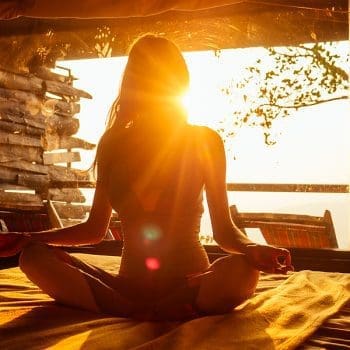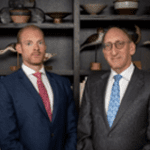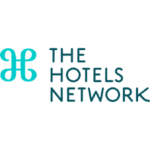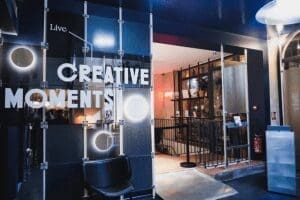 Our hypothesis is that wellness will play a leading role in many hotel brands’ growth over the coming decades. Populations in advanced economies are getting older, meaning more demand for medical tourism or healthspan-extension programming. Concurrently, there is an ever-growing interest in wellbeing-boosting and antiaging activities, scientific research and products following the work-life reset that was the pandemic.
Our hypothesis is that wellness will play a leading role in many hotel brands’ growth over the coming decades. Populations in advanced economies are getting older, meaning more demand for medical tourism or healthspan-extension programming. Concurrently, there is an ever-growing interest in wellbeing-boosting and antiaging activities, scientific research and products following the work-life reset that was the pandemic.
While there are numerous other factors at work here, we consider wellness to be the hotel trend of all trends because, simply put, if you don’t have your health then nothing else matters.
Rather than drone on in abstract about what properties can do in the domains of nutritional programming, sleep programs, in-room fitness, onsite physiotherapy, yoga, mindfulness, saunas, thalassotherapy, cold therapy, forest bathing or a host of others, what better way to learn than from a proven example of success?
For any hotel financier or developer out there, such a case study that shows positive results is all but necessary to consider a huge capex that may not reveal any significant payout within two or quarters. Engaging in the wellness space has this challenge: the benefits may not be immediate, but they can potentially be so lucrative that they match or exceed the rooms revenue stream itself.
To help elucidate how to make wellness financially successful, we interviewed Ersin Pamuksuzer, Co-Founder of TheLifeCo, a branded wellness resort with two properties in Turkey (Akra Antalya and Bodrum) and one in Thailand (Phuket), with more in the pipeline. TheLifeCo specializes in multi-night guided chronic disease management, nutrition, detox and weight loss itineraries, where guests follow a strict weeklong (or longer) regimen tailored to the individual that encompasses all meals, all activities, onsite therapies and diagnostic testing.
While your first thought may be that this level of wellness is out of scope for your brand or is only a niche amenity, consider the following: over 90% of guests to a TheLifeCo property end up returning or visiting another property in the brand, with both the Bodrum and Phuket resorts selling out at least three months in advance during high season.
Defining low wellness and alternative medicine
To understand the potential for wellness as an enduring profit center, it’s important to get to the root of what distinguishes TheLifeCo from other hotel’s programming. At present, what most of us imagine as wellness is, as Pamuksuzer points out, in fact a more narrowcast spa concept often labeled by evangelists as ‘low wellness’ or ‘pampering’ – mani-pedis, facials, massages and so on. Real wellness is so much more.
This ‘low’ labeling is not to besmirch these traditional spa amenities – they are veritable revenue generators in their own right – but they are not transformative experiences for the guest and thus they do not breed true loyalty. Understanding what we mean by transformative in this sense is absolutely crucial, whereby an activity, amenity or multi-day regimen is not only about making the customer feel good in the moment but enhancing their life satisfaction for years to come.
In the case for TheLifeCo, this transformation is accomplished through ‘alternative medicine’ programming – that is, holistic treatments or integrated health techniques that aim to heal the entire body and mind, not just a specific ailment or injury. The goal with any of these multi-day regimens to give guests ‘healthcare’ so that they can avoid having to go to the hospital for ‘sickcare’.
For instance, an extended water fast may not have the precision of a modern clinical trial for a pharmaceutical drug in order to authenticate its efficacy, and yet its cleansing, restorative power has been documented in historical texts and codified into religions for thousands of years. Or, as the two of us like to pithy say for all manner of intermittent fasting, “You can’t fix a car with the engine on.”
The problem is that going without solid meals for 72 to 96 hours is very, very, very, very hard, and almost impossible to do at home with the diversions of family, friends, a pantry full of snacks, work stressors and that Uber Eats order only two clicks away. TheLifeCo offers a calm, curated, safe and distraction-free environment where guests can undergo the bodily transformation enabled by a water or green juice-only cleanse.
What you can do
Your property may not be in an exotic locale, and luring guests in for a full week LOS may be too big of an ask for your target audience, but there are nevertheless wellness applications for every brand in every hotel category.
Some tips from our conversation include:
- If there’s a wellness center nearby that’s continually reaching full occupancy, engage them to become the partnering overflow property
- Specifically for a water-only or green juice detox, any room with a minibar can be reoriented to only include allowable items so that any guest can purchase a ‘mini-cleanse’ as an add-on
- People plan for wellness-first trips much farther in advance than regular vacations or corporate travel, meaning that your marketing must likewise pivot to this L2B timeframe
- Everyone wants to abscond to Southern Turkey or Thailand while the weather is scorching hot, but if a hotel sells out quickly during peak season, the parent brand should have a process (automated or manual) for recommending these waitlisted customers to book another date range or another property in the brand for the requested dates, all so that these prospects stay engaged and don’t start researching competitors
- Rethink your core audience and lookalike guest profiles as new wellness-driven customers are coming from all over the world (with Pamuksuzer remarking that TheLifeCo has seen a recent uptick in guests originating from Africa as wellness gains popularity there)
To this last point, consider the Global Wealth Report by Credit Suisse, which notes that there are over 62 million millionaires worldwide as of the end of 2021, with much of that growth happening outside of Europe and North America. Not only should you be taking a global view with your brand strategy, but also start to think in terms of the only thing more valuable than money – time.
As people accrue wealth beyond a certain point, day-to-day monetary needs become less important and we aim to increase the quality of how we spend our time (great experiences) as well as the quantity of quality time that we have (healthspan).
Above all for how hotels can get started, Pamuksuzer emphasizes, “People have souls; they’re fragile, especially during a fast or detox program. To make any wellness offering successful, a hotel brand must start by fundamentally grasping this emotional vulnerability. If a company is only in it for the ancillary spend, that’s all they’ll end up getting – ‘ancillary’ that never comes close to rooms revenue. But if a hotel brand embraces a wellness-first mindset, then this will echo through every amenity and every team member. Guests will feel it and reward you with not just repeat business but lasting loyalty.”
This article may not be reproduced without the expressed permission of the author.



























